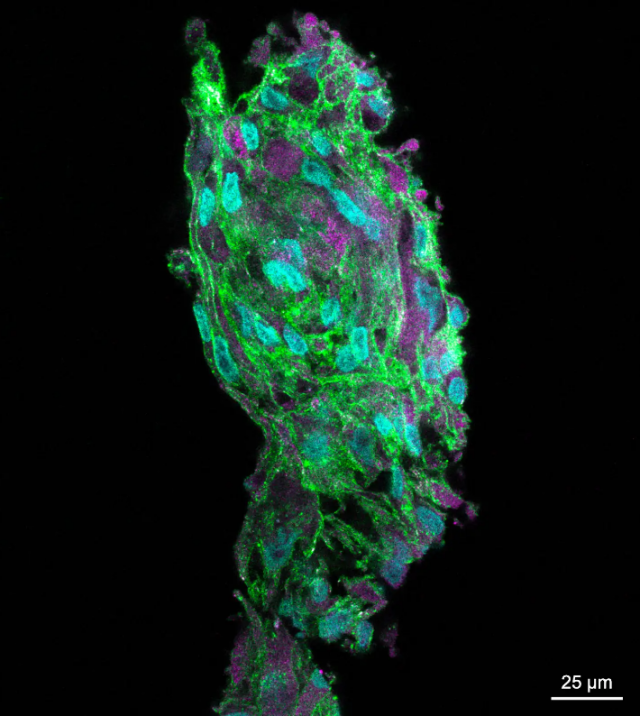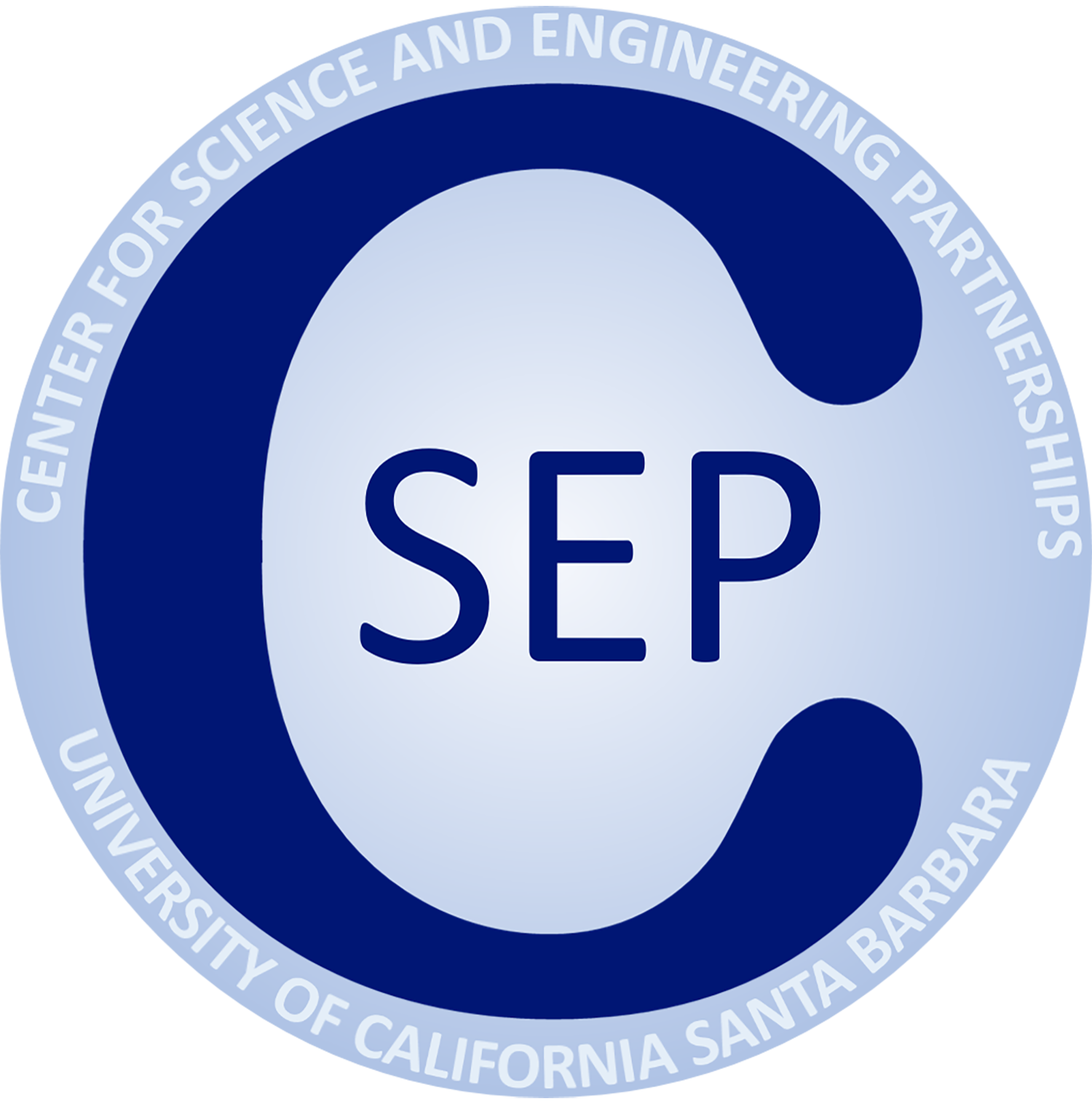
Bone Appétit: Stronger Bones With Every Bite
Description
Osteoblasts are a class of bone cells that form new bone tissue during both homeostasis and fracture wound healing. This image shows human bone marrow stem cells differentiating into three-dimensional bone tissue after one week in culture.
These human bone marrow stem cells (hMSCs) were cultured in three-dimensional hydrogels whose material properties mimic the extracellular matrix (ECM) conditions of a fracture hematoma, which serves as a temporary scaffold to adhere bone marrow stem cells within the wound site. The mechanical properties of the fracture hematoma are known to regulate osteogenic differentiation of hMSCs and promote tissue regeneration, a process that we can recapitulate in our lab using tunable biomaterials as cell culture scaffolds. This sample was fixed after seven days in culture and prepared for immunofluorescence imaging. Here, specific cellular markers can be labeled using antibodies conjugated to fluorescent molecules. DNA is shown in blue, with cell-ECM adhesion motifs shown in green and magenta.










